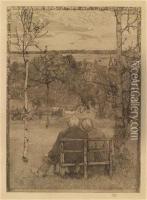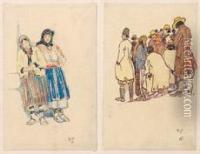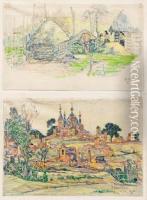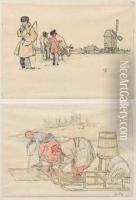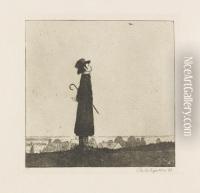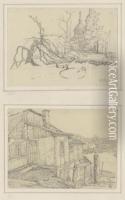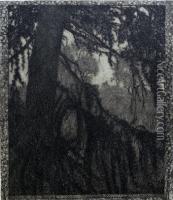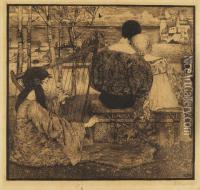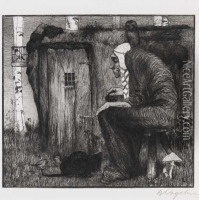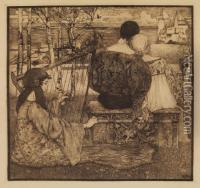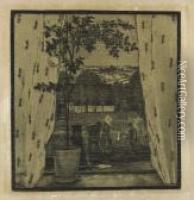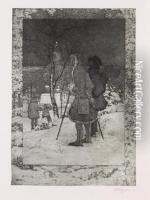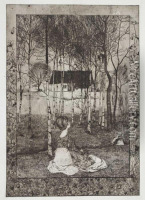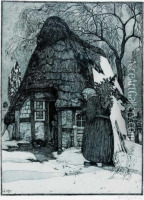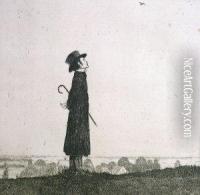Heinrich Vogeler Paintings
Heinrich Vogeler was a German painter, designer, and engraver, born on December 12, 1872, in Bremen, Germany. He was a prominent figure in the Jugendstil movement, the German version of Art Nouveau, which emphasized a synthesis of form and function and was characterized by its flowing curvilinear designs and natural forms.
Vogeler received his artistic training at the Düsseldorf Academy of Arts, where he studied from 1890 to 1895. After his education, he traveled to Belgium and Italy, where he was influenced by the works of the Pre-Raphaelites and the Italian Renaissance artists.
In 1894, Vogeler purchased a cottage in Worpswede, a village near Bremen that had become an artists' colony. There, he became a central figure of the Worpswede artists' group, which included other notable artists such as Fritz Mackensen, Otto Modersohn, and Paula Modersohn-Becker. The group focused on the natural landscape and peasant life, and Vogeler's early works featured the moorlands and people of the region, characterized by a soft, atmospheric quality.
Vogeler's style evolved over the years, and he became well-known for his graphic work, book illustrations, and designs for furniture and jewelry. His work often featured themes of love, beauty, and harmony with nature. One of his most famous works is 'The Barkenhoff', a representation of his own house and garden in Worpswede, which he redesigned in the Jugendstil aesthetic and became a meeting place for artists and intellectuals.
As the political climate in Germany changed, so did Vogeler's outlook and artistic expression. After World War I, he became increasingly involved in socialist politics and his art took on a more political character, reflecting his commitment to social justice and his opposition to the war. He created posters and illustrations that advocated for socialism and pacifism.
During the 1920s, Vogeler's political activism led him to the Soviet Union, where he became involved in artistic and educational projects. He was welcomed by the Soviet regime and was given a teaching position and a studio. However, as Stalin's Great Purge began in the 1930s, Vogeler, like many others, fell victim to the regime's paranoia and repression. He was arrested in 1938 on charges of espionage and was exiled to Kazakhstan.
Heinrich Vogeler died on June 14, 1942, in Kazakhstan, far from his home in Germany. His life and work reflect the tumultuous changes of the early 20th century and the intersection of art, politics, and society. Despite the tragic end to his life, Vogeler's artistic legacy continues, particularly in his contribution to the Jugendstil movement and his influence on the Worpswede artists' community.
